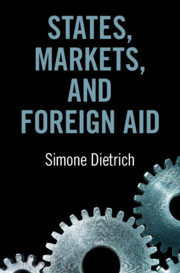Book contents
- States, Markets, and Foreign Aid
- States, Markets, and Foreign Aid
- Copyright page
- Dedication
- Contents
- Figures
- Tables
- Preface and Acknowledgements
- 1 Understanding Donor Pursuit of Foreign Aid Effectiveness
- 2 How National Structures Shape Foreign Aid Delivery
- 3 Examining the Causal Mechanism across Donors
- 4 Country-Level Evidence Linking Donor Political Economies to Variation in Aid Delivery
- 5 Testing the Argument with Evidence from Aid Officials from the United States, United Kingdom, Sweden, Germany, France, and Japan
- 6 Examining Public Opinion as an Alternative Explanation
- 7 Implications for Aid Effectiveness, Public Policy, and Future Research
- Bibliography
- Index
4 - Country-Level Evidence Linking Donor Political Economies to Variation in Aid Delivery
Published online by Cambridge University Press: 29 October 2021
- States, Markets, and Foreign Aid
- States, Markets, and Foreign Aid
- Copyright page
- Dedication
- Contents
- Figures
- Tables
- Preface and Acknowledgements
- 1 Understanding Donor Pursuit of Foreign Aid Effectiveness
- 2 How National Structures Shape Foreign Aid Delivery
- 3 Examining the Causal Mechanism across Donors
- 4 Country-Level Evidence Linking Donor Political Economies to Variation in Aid Delivery
- 5 Testing the Argument with Evidence from Aid Officials from the United States, United Kingdom, Sweden, Germany, France, and Japan
- 6 Examining Public Opinion as an Alternative Explanation
- 7 Implications for Aid Effectiveness, Public Policy, and Future Research
- Bibliography
- Index
Summary
Chapter 4 offers the first empirical test of my theory. The evidence in Chapter 4 is quantitative and tests the argument at the donor–recipient country level, using a data set of 23 OECD donors and their aid-receiving countries between 2005 and 2015.The key explanatory variable is donor political economy type: whether national aid organizations are organized around neoliberal or traditional public sector principles. What I expect to find is that, after controlling for other factors that are associated with aid delivery decisions, donor governments whose bureaucratic structures and rules are of neoliberal character are more likely to bypass under conditions of poor recipient governance than donors whose political economies are organized around a traditional public sector logic. I find robust support for my argument.
- Type
- Chapter
- Information
- States, Markets, and Foreign Aid , pp. 123 - 152Publisher: Cambridge University PressPrint publication year: 2021

